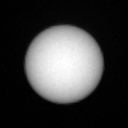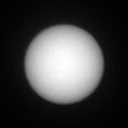NASA's Curiosity Rover Just Witnessed Two Solar Eclipses On Mars
When a solar eclipse is expected here on Earth, it can be a pretty big deal. Back in August of 2017, a total solar eclipse occurred over much of the United States, and people traveled from huge distances just to catch a glimpse of the awe-inspiring sight.
For NASA, sending robots to other planets is a great way to learn more about Earth's neighbors, but it's also an opportunity to observe events like eclipses in places where humans have never ventured. In a new blog post, NASA's Jet Propulsion Laboratory reveals that the Curiosity rover on Mars recently had the opportunity to see not one, but two solar eclipses.
As NASA explains, Curiosity was in the perfect position to observe solar eclipses caused by two of Mars' moons. Both Phobos and Deimos were spotted transiting the Sun from the surface of the planet, and while neither of the moons were large enough to completely block the view of the star, images of the events are still incredibly interesting.

In a pair of animated GIFs you can see the moons moving in front of the Sun. These recordings were made possible by the solar filters installed on Curiosity's "Mastcam" camera, which NASA likens to "eclipse glasses."

The larger of the two moons is Phobos, while the tiny one is Deimos. The images were recorded on March 26th and March 17th, respectively. Observations like this are helpful for NASA scientists who want to learn more about the orbits of Martian moons.
"More observations over time help pin down the details of each orbit," Mark Lemmon of Texas A&M, a co-investigator of the Curiosity mission, said in a statement. "Those orbits change all the time in response to the gravitational pull of Mars, Jupiter or even each Martian moon pulling on the other."